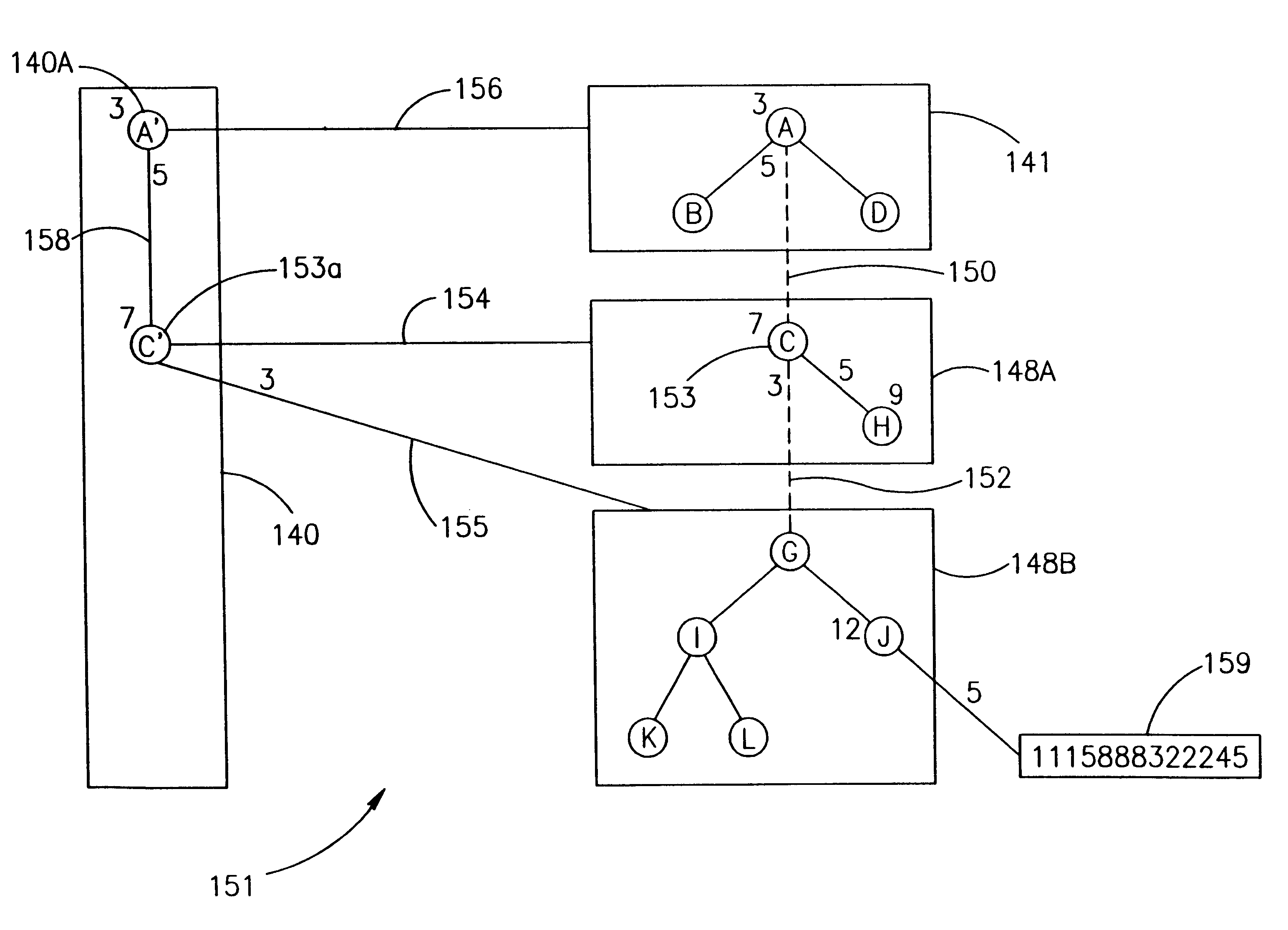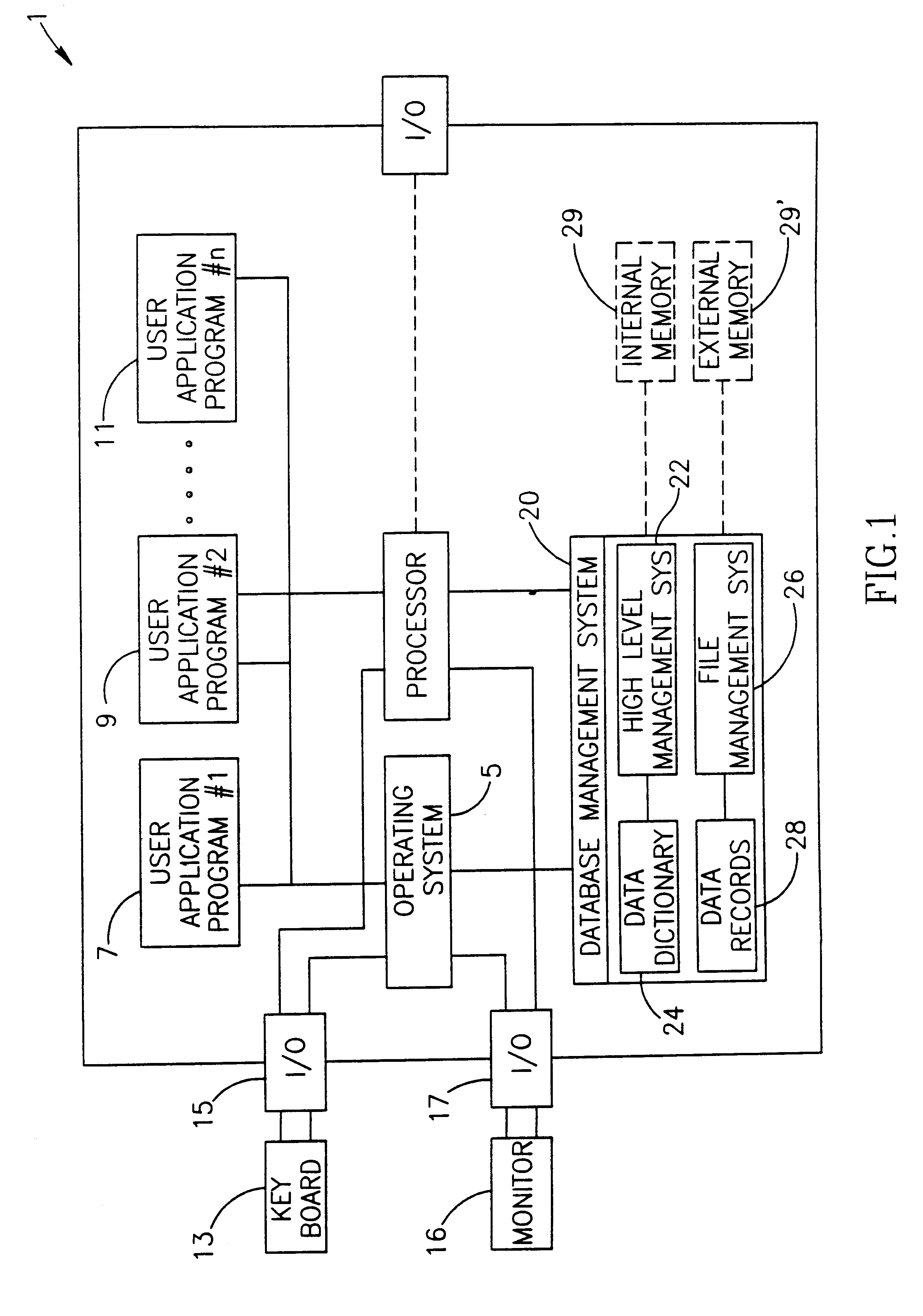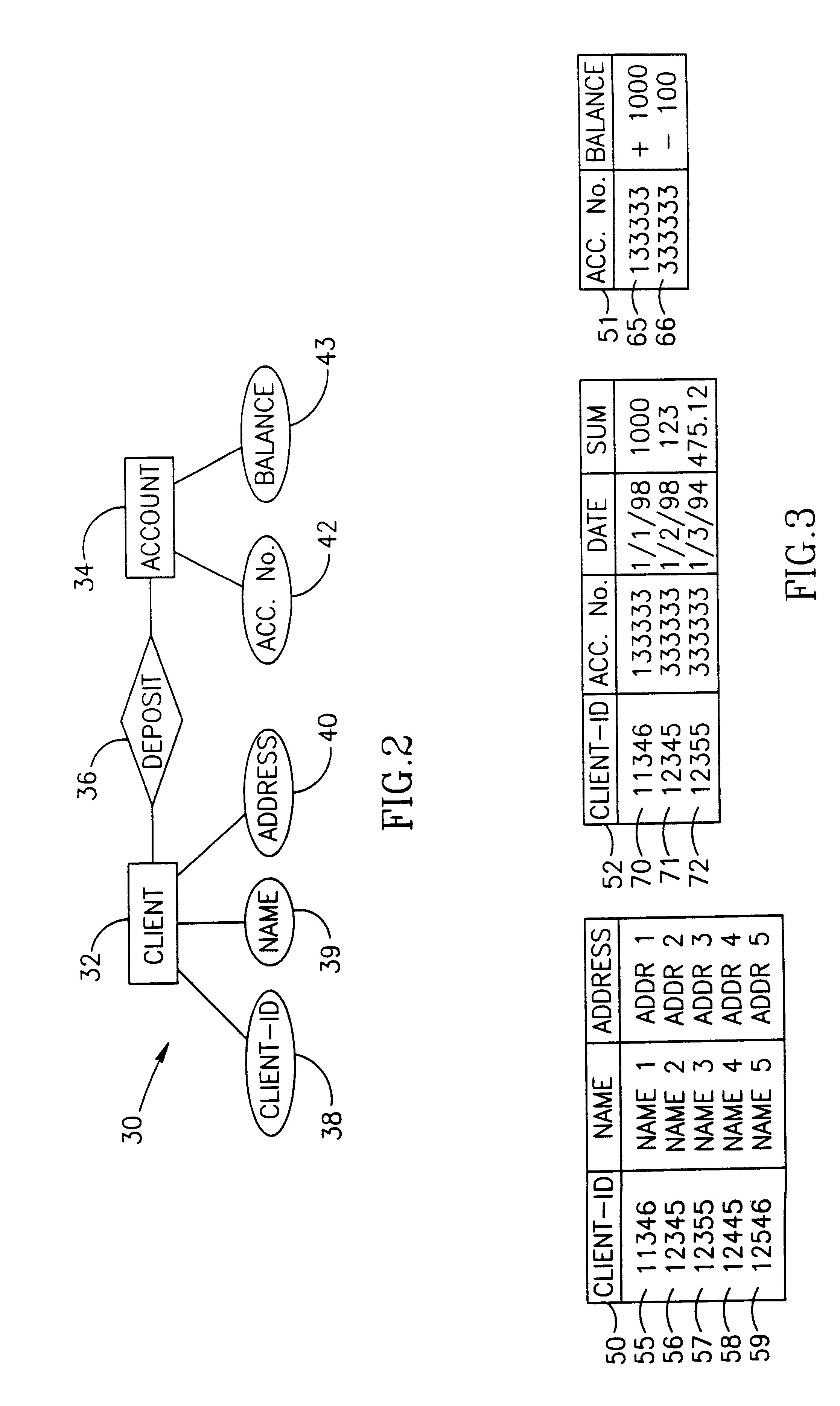Layered index with a basic unbalanced partitioned index that allows a balanced structure of blocks
a partition index and index technology, applied in the field of layered indexes with basic unbalanced partition indexes that allow a balanced structure of blocks, can solve the problems of cumbersome and error-prone approaches, data cannot be easily arranged, and require large volumes, so as to achieve enhanced performance, enhanced performance, and enhanced performance
- Summary
- Abstract
- Description
- Claims
- Application Information
AI Technical Summary
Benefits of technology
Problems solved by technology
Method used
Image
Examples
Embodiment Construction
Attention is first directed to FIG. 1 showing a generalized block diagram of a system employing a database file management system of the invention. Thus, a general purpose computer 1, e.g. a personal computer (P.C.) employing a Pentium.RTM. microprocessor 3 commercially available from Intel Corp. U.S.A., has an operating system module 5, e.g. Windows NT.RTM. commercially available from Microsoft Inc. U.S.A., which communicates with processor 3 and controls the overall operation of computer 1.
P.C. 1 further accommodates a plurality of user application programs of which only three 7, 9 and 11, respectively are shown. The user application programs are executed by processor 3 under the control of operating system 5, in a known per se manner, and are responsive to user input fed through keyboard 13 by the intermediary of I / O port 15 and the operating system 5. The user application programs further communicate with monitor 16 for displaying data, by the intermediary of I / O port 17 and ope...
PUM
 Login to View More
Login to View More Abstract
Description
Claims
Application Information
 Login to View More
Login to View More - R&D
- Intellectual Property
- Life Sciences
- Materials
- Tech Scout
- Unparalleled Data Quality
- Higher Quality Content
- 60% Fewer Hallucinations
Browse by: Latest US Patents, China's latest patents, Technical Efficacy Thesaurus, Application Domain, Technology Topic, Popular Technical Reports.
© 2025 PatSnap. All rights reserved.Legal|Privacy policy|Modern Slavery Act Transparency Statement|Sitemap|About US| Contact US: help@patsnap.com



